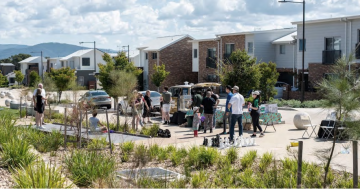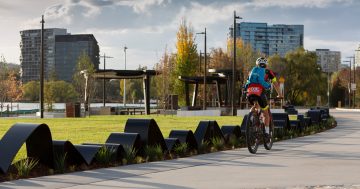UC researchers are studying Crace to see if it is making people happy and healthy.
We haven’t seen much by the way of the results yet, however I will tell you that if they discover that living in a house that looks exactly like every other house on the street while having to pick your garden out of a catalogue so it matches your neighbours actually makes people happier, then I will stop calling myself a person and look for a new species to identify as.
Led by Léan OBrien, senior research fellow at the University’s Faculty of Health, ‘The Crace Study’ aims to find out whether the design of suburbs can have long-term benefits for the health and wellbeing of their residents.
“Crace, which had its first release of homes in 2009, was designed to be attractive and safe and to promote getting out and about, engaging in fun activities, social interaction and sustainable living,” Dr OBrien said. “Current thinking is that these design features will also have long-term benefits for the health and wellbeing of residents, which The Crace Study will test.”
The study is a novel exercise for Canberra but Dr OBrien and colleagues hope the findings will be informative at regional, national and international levels.
Professor Helen Berry, who leads the University’s healthy and sustainable communities research program, says that projects like these are rare and it has already attracted interest from policy-makers.
“The Crace Study is part of a growing international effort to understand how to build our cities in a way that keeps people healthy and happy. There’s growing demand for studies like these, which is why policy-makers and international bodies like the World Health Organization are watching The Crace Study closely,” Professor Berry said.
The study began in 2012 with an initial survey of 277 people, and is planned to continue for at least five years. The second wave of data will be collected in a survey opening later this month.
Responses to the first survey suggested Crace residents were physically active, well connected with their neighbours, and engaged with community events. Subsequent stages of the study will look for improvements in the health and wellbeing of residents as the suburb develops.



















